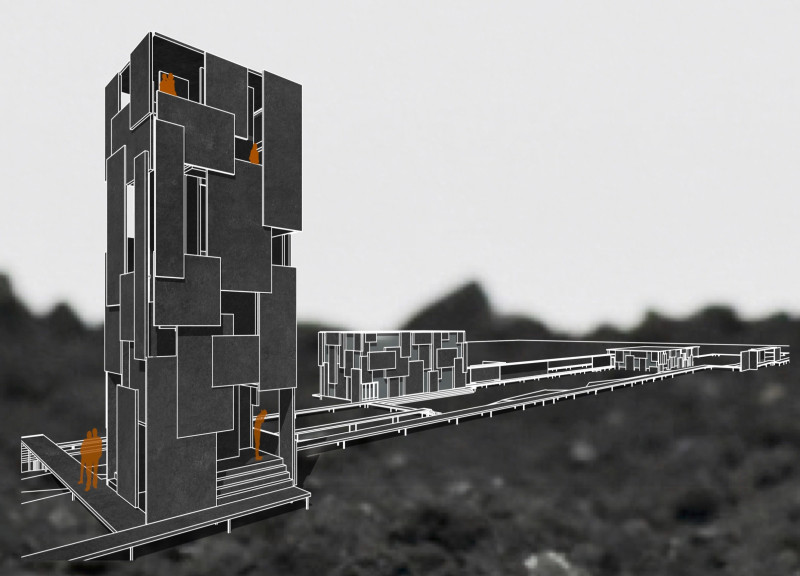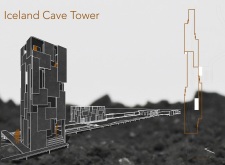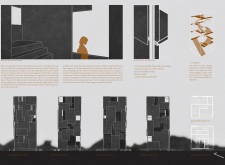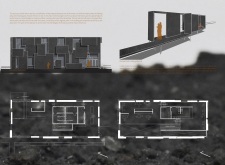5 key facts about this project
The unusual design approach employed in the Iceland Cave Tower distinguishes it from other architectural projects in the region. The primary structural material, pre-oxidized neoprene steel, not only provides durability but also harmonizes with the volcanic rock and earth tones of the environment. The use of interlocking steel panels creates a textured facade reminiscent of cave walls, while the structure’s organic form emulates the natural topography.
The entrance features a gradual slope, leading visitors into a winding interior layout that reveals various levels and viewing platforms, promoting exploration and interaction. This non-linear circulation path mimics the experience of navigating through a natural cave, further enhancing the visitor's engagement with the space. The integration of strategically placed glass openings allows natural light to filter into the interior, illuminating key areas while maintaining a sense of mystery akin to underground caverns.
Design Specificities and Unique Features
One of the most notable aspects of the Iceland Cave Tower is its focus on achieving thermal comfort through innovative architecture. The incorporation of a ventilated cavity within the structure ensures adequate airflow, minimizing reliance on artificial heating and cooling systems. This energy efficiency aligns with sustainable architectural practices and illustrates the project's responsiveness to local climatic conditions.
Moreover, the tower incorporates a dual-staircase system, facilitating vertical movement while enhancing social interaction among visitors. The design of these staircases is not merely functional; they also serve as visual elements that contribute to the overall aesthetic of the space. Large viewing platforms provide unobstructed vistas of the surrounding Icelandic landscape, reinforcing the connection between the tower and its site.
Project Functionality and Integration
Functionally, the Iceland Cave Tower serves as a multifaceted space dedicated to both observation and education. Its visitor center is strategically located adjacent to the main structure, facilitating easy access for visitors and providing an area for informational exhibits. The design prioritizes accessibility and comfort, ensuring that visitors can fully engage with the educational content while immersed in the unique architectural environment.
The internal layout, characterized by staggered levels and spacious areas, supports various activities, from guided tours to interactive exhibits about local geology. The choice of industrial parquet flooring in high-traffic areas aids in durability while providing a tactile experience that complements the overall design theme.
In summary, the Iceland Cave Tower exemplifies a thoughtful convergence of architecture and landscape, using materials and forms that echo the region's natural beauty. Its unique design approach and functional considerations create an enriching experience for visitors, emphasizing the importance of context in architectural design. For those interested in the technical aspects of this project, including architectural plans, architectural sections, and further architectural ideas, a comprehensive exploration of the project presentation is encouraged.


























